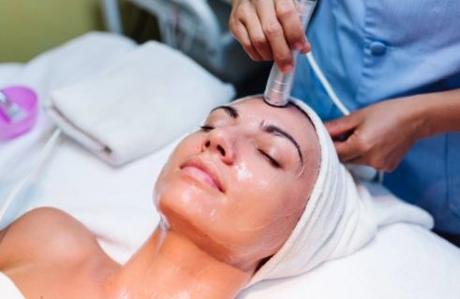Chemical Peels: Everything You Need to Know
In this article, Dr. Waseemuddin Shaikh, an excellent dermatologist from Ahmedabad, has discussed everything you need to know about Chemical Peels.
Dr. Waseemuddin Shaikh, a leading dermatologist in Aurangabad, founded Dermaconsult Skin, Hair, Laser & Cosmetology Clinic, a premier skin clinic.
The clinic offers personalized services to help you regain your youthful appearance and restore your beauty and confidence, regardless of your age.
The goal is to help patients look their best, and you can rest assured that you are being treated by one of Aurangabad’s best dermatologists at the Dermaconsult Clinic.
What are Chemical Peels?
It’s critical to understand this highly effective cosmetic procedure before delving into its intricacies.
A chemical peel is a skin resurfacing treatment that involves applying a chemical solution to the skin to remove the dead skin’s outer layers.
Chemical peels stimulate cell turnover, restoring unclogging pores, skin discoloration, and giving the skin a vibrant glare through chemical exfoliation.
Chemical peels are used to remove the skin’s top layers. The depth and effect of a chemical peel can be regulated depending on its strength and type.
Treating acne, acne scars, sun damage, lines, wrinkles, and hyperpigmentation, managed damage to the skin facilitates skin peeling and improvement in texture.

What are some reasons a patient might be a good candidate for a chemical peel?
Chemical peels are the most popular cosmetic procedure in dermatology because they can treat a wide range of skin conditions. According to Dr.Waseemuddin Shaikh, Aurangabad’s expert Dermatologist, the following skin conditions can be treated with chemical peels:
- Sun damage
- Actinic Keratoses or Pre-cancers
- Hyperpigmentation
- Melasma
- Age spots
- Sunspots
- Post-inflammatory hyperpigmentation (PIH) from inappropriate laser therapies from IPL or acne marks, Picosure, or Fraxel laser
- Skin texture issues
- Freckles
- Acne scars
- Rosacea
- Acne
- Wrinkles and fine lines
Is there a difference between chemical peels? What exactly are they? Categories of chemical peels
Chemical peels are divided into three categories by Dr. Waseemuddin Shaikh:
Light Chemical Peels:
Light chemical peels are shallow and frequently directed as “lunch” peels. This acid peel is ideal for someone who has relatively good skin and wants to refresh it.
According to Waseemuddin Shaikh, an amazing dermatologist from Aurangabad, chemical peels treat fine lines and wrinkles on the skin’s surface and even out skin tone and texture.
For several months, light chemical peels can be done every two weeks. Acne breakouts, skin tone, fine lines, skin texture, and rough and dry skin are all treated with light chemical peels.
Light chemical peels usually only take a couple of days to heal. Patients can return to work right away after a light peel because there is only minor redness, dryness, and irrigation, and the dead skin is exfoliated.
Your skin will glow with a healthy glow in no time. To rejuvenate their skin, most patients undergo a series of light peels.
Medium Chemical Peels:
Due to the moderate flaking and peeling of the skin, medium peels may require several more days of downtime (seven to ten days).
These peels are administered with chemicals of a more muscular type or concentration, resulting in a deeper level of chemical peeling.
Because these medium peels penetrate the skin’s dermis, they can cause flaking, redness, and rendering, which can take up to a week to resolve.
According to Dr. Waseemuddin Shaikh, an incredible dermatologist in Aurangabad, most patients receive medium peels three to four times a year.
Deeper lines and wrinkles, skin discoloration and pigmentation, Melasma, acne scars, and post-inflammatory hyperpigmentation (PIH) from acne or lasers are treated with medium chemical peels.
Deep Chemical Peels:
Dermatologists and plastic surgeons utilize deep chemical peels to treat more in-depth wrinkles, lines, and extreme acne scarring. Because these peels penetrate deeper into the dermal layers of the skin, they need more downtime.
One of the peeling agents used in this deep chemical peel is phenol acid.
Patients with darker skin tones are not good candidates for a deep chemical peel, as their skin color determines their suitability.
Deep peels often necessitate the use of a numbing agent or sedation and should only be performed by a board-certified dermatologist.
Sun damage, deep lines and wrinkles, pre-cancers, and deep acne scars are treated with deep chemical peels.
A deep acid peel can take two to three weeks to heal, and you will be bandaged immediately after the procedure. Blisters or burns are a possible side effect of improper deep peels.
Cool compresses are applied to the treated area immediately after all chemical peels. Dry skin is treated with lotion, and daily sunscreen with an SPF of 50 or higher is used.
Stringent sun avoidance and sunscreen are required both during and after the procedure to keep the favorable and rejuvenating effects of the chemical peel.

Are there any negative consequences to chemical peels?
Dryness and flaking are entirely typical and even expected for several days to a week, depending on the depth of the chemical peel.
These side effects can be treated with moisturizers and lotions. Chemical peels are more dangerous and have more side effects when performed by inexperienced and unlicensed providers.
The chemical peel can cause infection and scarring, mainly if the wrong chemical peel is used for the wrong skin tone.
Hyperpigmentation and permanent hypopigmentation (or lack of pigment) are possible side effects. A chemical peel can also cause infection.
How can you begin using chemical peels right now?
Dr. Waseemuddin Shaikh can help if you’re bothered by fine lines, wrinkles, or other visible signs of aging. Dr. Waseemuddin is a well-known dermatologist in Aurangabad who has extensive experience with various non-surgical, non-invasive procedures that can help with multiple skin problems.
